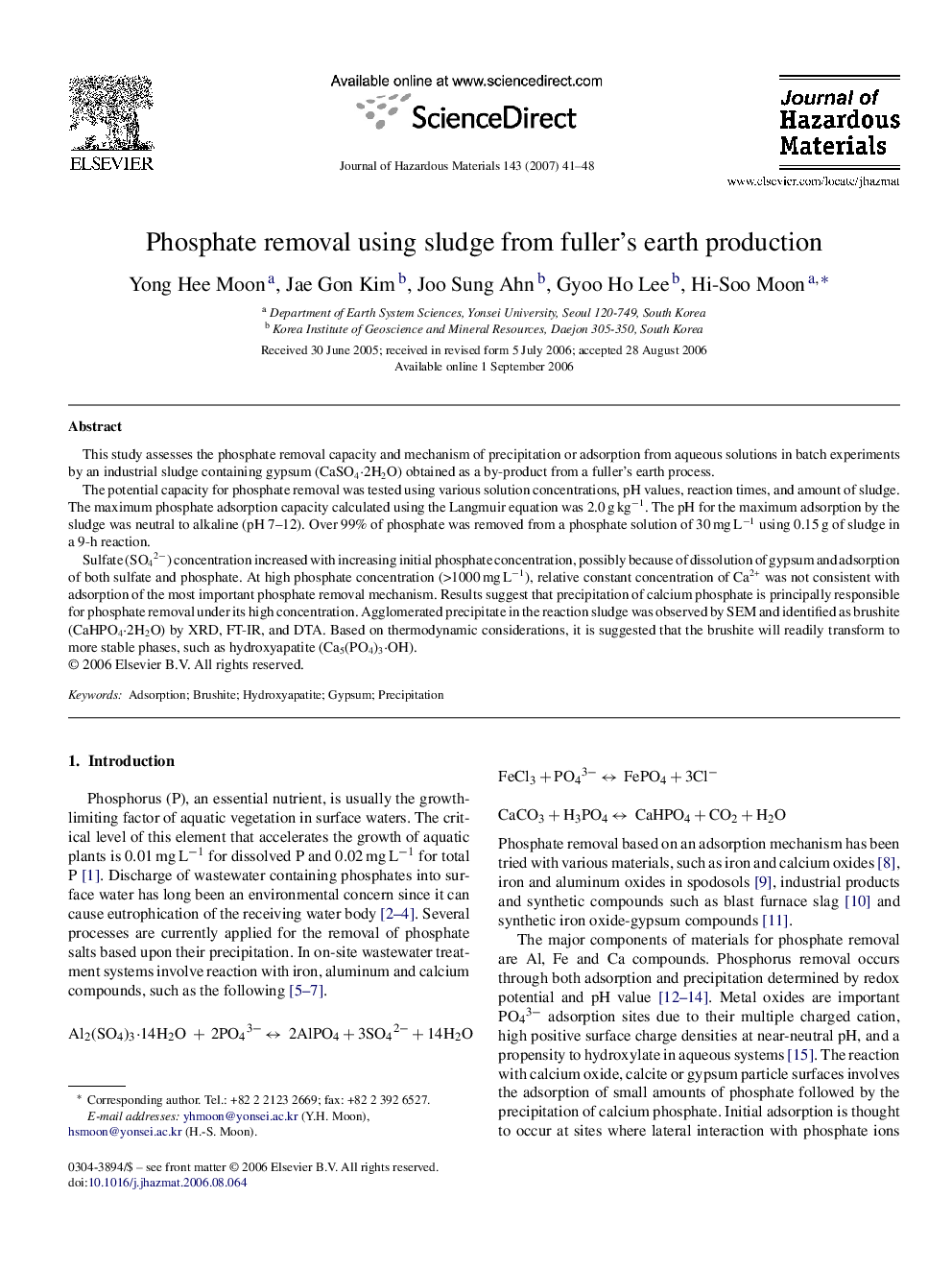| Article ID | Journal | Published Year | Pages | File Type |
|---|---|---|---|---|
| 584690 | Journal of Hazardous Materials | 2007 | 8 Pages |
Abstract
Sulfate (SO42â) concentration increased with increasing initial phosphate concentration, possibly because of dissolution of gypsum and adsorption of both sulfate and phosphate. At high phosphate concentration (>1000 mg Lâ1), relative constant concentration of Ca2+ was not consistent with adsorption of the most important phosphate removal mechanism. Results suggest that precipitation of calcium phosphate is principally responsible for phosphate removal under its high concentration. Agglomerated precipitate in the reaction sludge was observed by SEM and identified as brushite (CaHPO4·2H2O) by XRD, FT-IR, and DTA. Based on thermodynamic considerations, it is suggested that the brushite will readily transform to more stable phases, such as hydroxyapatite (Ca5(PO4)3·OH).
Related Topics
Physical Sciences and Engineering
Chemical Engineering
Chemical Health and Safety
Authors
Yong Hee Moon, Jae Gon Kim, Joo Sung Ahn, Gyoo Ho Lee, Hi-Soo Moon,
